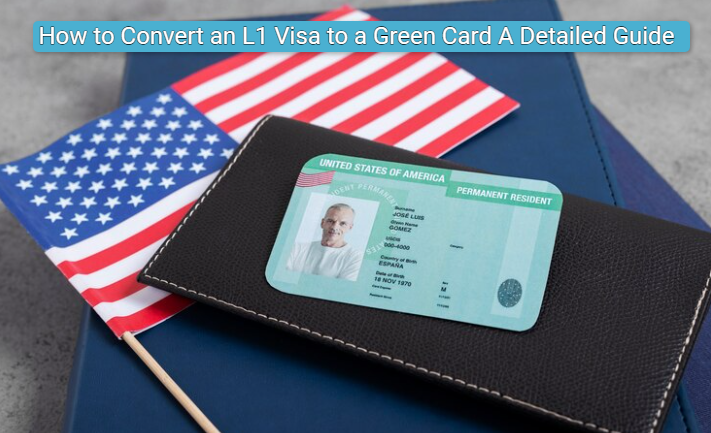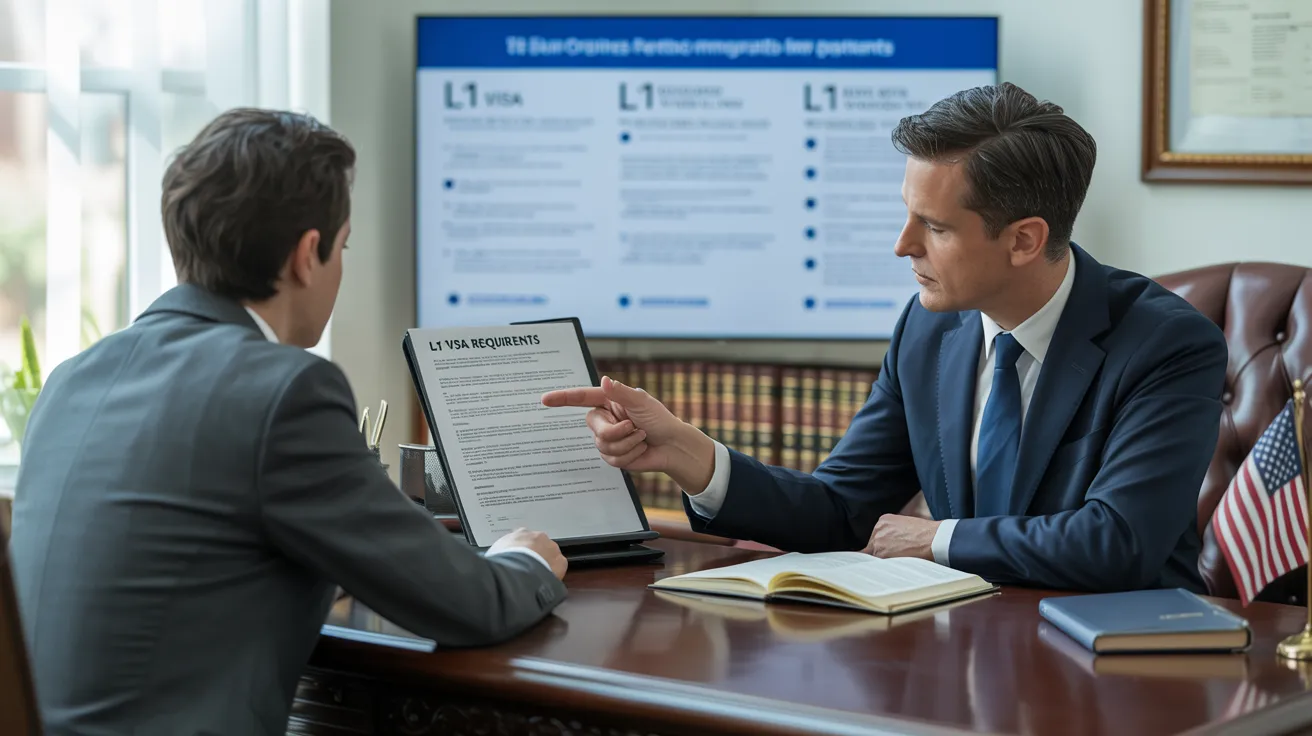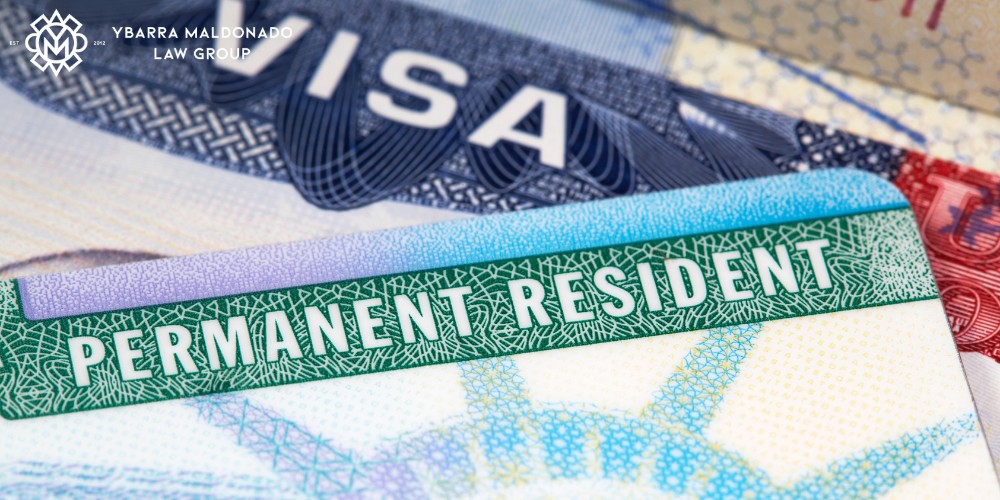Unlocking Opportunities: A Comprehensive Guide to the L1 Visa Process
The L1 visa procedure presents a crucial pathway for multinational firms seeking to transfer essential workers across boundaries. Understanding the subtleties of eligibility requirements, the distinctions in between L-1A and L-1B visas, and the ins and outs of the application process can considerably impact a candidate's success. Nonetheless, navigating this complex landscape is not without its obstacles, and mindful focus to documentation and company sponsorship is crucial. As we discover the vital elements of this process, the approaches for conquering potential barriers will certainly become evident, revealing how informed preparation can open a world of opportunities.
Understanding the L1 Visa
Understanding the L1 visa involves acknowledging its relevance as a vital device for multinational business seeking to move proficient workers in between global offices. This non-immigrant visa group assists in the movement of execs, supervisors, and specialized expertise employees to the USA, consequently allowing organizations to preserve functional connection and harness international skill efficiently. The L1 visa is separated into two primary categories: L-1A for supervisors and executives, and L-1B for staff members having specialized knowledge.The L1 visa serves an important function in boosting a firm's one-upmanship in the worldwide marketplace - L1 Visa. By enabling companies to move their key employees, organizations can guarantee that important jobs are managed by certified individuals who are already acquainted with the company's society and functional procedures. This interior transfer device not only fosters expertise sharing yet likewise advertises advancement and collaboration throughout borders.Moreover, the L1 visa is often preferred for its reasonably straightforward application procedure compared to other visa groups, as it permits twin intent, permitting owners to go after permanent residency while on a temporary copyright. This function makes the L1 visa especially appealing for both employers and workers, as it enhances the path for experienced professionals to establish lasting residency in the United States
Eligibility Criteria
Eligibility for the L1 visa hinges on a number of essential standards that guarantee both the employee and the company satisfy details qualifications. This non-immigrant visa is developed for multinational companies to move staff members from consular services to united state counterparts.Firstly, the employer should be a certifying company, that includes a moms and dad firm, branch, associate, or subsidiary of a united state business. The business needs to have been doing organization for a minimum of one year both in the united state and abroad. This assures that the firm has adequate operational stability and a genuine presence.Secondly, the staff member must hold a supervisory, exec, or specialized understanding setting. For L1A visas, the applicant has to show managerial or executive credentials, while L1B visas concentrate on specialized understanding related to the organization's products, solutions, or procedures. In addition, the staff member has to have functioned for the foreign entity for a minimum of one constant year within the last three years before their application.Lastly, the employee's role in the U.S. should straighten with their previous setting, guaranteeing that their skills and proficiency are leveraged for the firm's benefit.
Kinds of L1 Visas
The L1 visa group makes up two main types made to assist in the transfer of employees within multinational firms: the L1A visa for supervisors and execs, and the L1B visa for employees with specialized understanding. Each kind serves unique purposes and has details eligibility criteria.The L1A visa is tailored for people that hold supervisory or executive settings within a business. This visa enables top-level staff members to transfer to an U.S. branch, subsidiary, or associate of the same company. Applicants for the L1A visa must demonstrate that they have actually been employed in a managerial or executive capability for at the very least one constant year within the previous 3 years before their application. In addition, this visa uses a much longer period of remain, at first approved for 3 years, with the possibility of expansions for up to 7 years.In comparison, the L1B visa is planned for professionals with specialized understanding associated to the business's items, solutions, or procedures. To certify, candidates must prove that their experience is important to the organization and that they have helped at least one continuous year within the last three years in a role that required this specialized understanding. The L1B visa is at first approved for 3 years, with extensions offered for up to five years.Both visa types are essential for firms looking for to enhance their global operations by leveraging knowledgeable personnel, thus promoting technology and performance within the U.S. market.
Application Process
Steering through the L1 copyright process involves numerous vital steps that have to be diligently complied with to ensure an effective end result. The procedure begins with the U.S. employer, that need to initially establish eligibility by demonstrating a certifying partnership with the foreign entity and confirming that the worker satisfies the details requirements for the L1 visa classification being sought.Once qualification is confirmed, the employer starts the procedure by filing Form I-129, the Petition for a Nonimmigrant Employee, with the U.S. Citizenship and Migration Provider (USCIS) This type has to be accompanied by a comprehensive summary of the task tasks to be done, the business framework of both the U.S. and foreign entities, and the employee's credentials. It's crucial to verify that all details is exact and full, as omissions or mistakes can result in hold-ups or denials.Upon approval of the I-129 petition, the following step includes the worker applying for the L1 visa at a united state embassy or consular office in their home country. This phase calls for the completion of Kind DS-160, the Online Nonimmigrant copyright, and setting up an interview. During the meeting, the candidate must provide evidence sustaining their certifications and the company's petition.After the visa is provided, the employee can go into the United States to function in the designated duty. In general, careful preparation and adherence to every action of the application process are important for an effective L1 visa end result.
Called for Documents

Crucial Types Needed
Navigating the L1 Visa process requires mindful attention to the essential types and documentation needed for a successful application. The main type needed is the Kind I-129, Request for a Nonimmigrant Employee, which should be completed and submitted by the united state company. This kind details the information of the employment offer and the credentials of the worker looking for the L1 Visa.Alongside Form I-129, the applicant will require to total Form I-539 if going along with relative are additionally getting visas. Furthermore, the employer needs to provide evidence of the certifying relationship in between the U.S. entity and the foreign entity, frequently necessitating the entry of corporate files such as articles of consolidation or monetary statements.Moreover, it is necessary to include the L Category Supplement to Kind I-129, which specifies the type of L Visa being requested-- either L-1A for supervisors and execs or L-1B for workers with specialized expertise. Candidates need to assure that all forms are signed and dated suitably, as insufficient submissions can lead to delays or denials. Effectively putting together these crucial types lays the foundation for a smoother L1 copyright procedure.

Supporting Proof Needs
Supporting documentation is necessary for an effective L1 copyright, as it confirms the insurance claims made in the request. Applicants have to provide a variety of files to show qualification for the visa, which is categorized into two key types: proof of the certifying partnership in between the U.S. and international entities and evidence of the applicant's qualifications.To establish the partnership, applicants need to submit paperwork such as company business charts, economic declarations, and proof of possession. These papers verify that the international business has a certifying connection with the united state employer, whether as a moms and dad business, subsidiary, branch, or affiliate.For the applicant's certifications, crucial files include an in-depth work letter from the foreign company, detailing the applicant's work title, responsibilities, and period of work. Additionally, instructional credentials, such as degrees and diplomas, need to be supplied to prove the candidate's expertise in the pertinent field.
Company Sponsorship Records

Usual Obstacles
Navigating the L1 visa procedure provides numerous typical obstacles that applicants ought to understand. Secret issues frequently consist of rigorous documentation needs, potential delays in processing times, and the necessity for stringent lawful compliance. Comprehending these challenges can help applicants better prepare and alleviate threats during their copyright trip.
Documentation Needs
The L1 copyright process typically presents substantial challenges related to paperwork demands. Applicants must give considerable documentation to establish eligibility, which can cause complication and possible delays. Key files include evidence L1 Visa of a qualifying connection between the U.S. and foreign company, proof of the applicant's employment background, and detailed info concerning the work duty in the U.S.One common challenge is collecting enough proof to demonstrate the nature of the qualifying relationship. Companies commonly battle to existing clear organizational charts or economic statements that illustrate the connection between the entities. In enhancement, ensuring that letters of assistance from companies precisely show the candidate's work obligations and qualifications is necessary, as vague summaries can result in denials.Another issue emerges from the need for comprehensive work summaries that line up with the L1 visa classifications. Applicants must express not just their existing duty however additionally their supervisory or specialized knowledge responsibilities plainly. This requires a comprehensive understanding of both the candidate's placement and the regulative language used in L1 applications.
Handling Time Delays
Experiencing hold-ups in handling times is a common difficulty faced by L1 visa candidates, commonly leading to disappointment and uncertainty. A number of elements add to these delays, including high application quantities, boosted analysis of applications, and management backlogs within the united state Citizenship and Migration Services (USCIS) Applicants might locate that processing times can differ significantly depending upon the service center managing their application, as each center has its very own workload and effectiveness levels. In addition, the complexity of the candidate's case, such as the demand for comprehensive documentation or explanation, can even more expand wait times.In some instances, issues associated with the candidate's existing migration condition or previous visa history might likewise bring about extra delays, as USCIS might require additional evaluation or information. It is vital for prospects to continue to be aggressive throughout this period, keeping open interaction with their employers and legal reps to resolve any kind of potential concerns promptly.Understanding these handling time challenges can aid L1 visa applicants plan for possible delays and minimize the effect on their change and career plans. Perseverance and diligence are necessary merits in steering this complex procedure.
Legal Conformity Issues
Numerous L1 visa applicants come across lawful compliance issues that can complicate their trip toward getting the visa. Comprehending and adhering to the particular policies set by the U.S. Citizenship and Migration Services (USCIS) is vital. Common challenges consist of showing the certifying partnership in between the international and U.S. companies, in addition to verifying that the applicant has the requisite specific expertise or managerial capacity.Additionally, applicants have to give complete paperwork describing their task tasks, company framework, and monetary feasibility of the U.S. entity. Insufficient or unreliable paperwork can bring about hold-ups or perhaps rejections. Employers have to also assure that they abide with labor laws, including wage and functioning problem criteria, which can influence visa eligibility.Another usual problem involves keeping compliance with the regards to the visa as soon as given. Changes in work standing, job duties, or business framework can require amendments to the visa, which otherwise resolved without delay can bring about legal problems. As a result, staying informed concerning compliance needs and seeking legal guidance when essential is vital to navigate the intricacies of the L1 visa process efficiently.
Tips for Success
Success in the L1 copyright process commonly depends upon careful preparation and interest to information. To enhance your possibilities of approval, begin by thoroughly understanding the qualification needs for both the L1A and L1B visa categories. Assess whether your setting at the company qualifies as managerial, executive, or specialized expertise, as this categorization especially impacts your application.Next, gather extensive documentation that corroborates your claims. This includes organizational graphes, detailed task summaries, and evidence of the business's functional structure. Clear and concise proof of the certifying connection between the U.S. entity and the international entity is crucial. Validate that all papers are arranged rationally and provided in an expert way, as this mirrors your dedication and seriousness concerning the application.Engage the solutions of an experienced immigration attorney that focuses on L1 visas. Their know-how can confirm vital, guiding you through complex policies and guaranteeing that all paperwork abides by current laws. In addition, plan for the interview by exercising solutions to common questions and preparing to discuss your function and contributions to the firm detailed.
Often Asked Questions
Can Family Members Accompany the L1 Visa Owner?
Yes, member of the family of L1 visa owners, including spouses and single youngsters under 21, can accompany the key visa owner. They may also make an application for L2 visas, which enable them to reside in the USA.
How Much Time Can I Remain on an L1 Visa?
The L1 visa enables first stays of up to 3 years, with the opportunity of expansion. L1A visa owners might remain for an optimum of seven years, while L1B visa holders can remain for five years.
Can L1 Visa Holders Use for a Permit?
Yes, L1 visa holders can make an application for a permit. L1 Visa Requirements. They may pursue long-term residency through employment-based groups, typically calling for sponsorship from their employer, given they fulfill the needed certifications and documents demands
What Happens if My L1 copyright Is Rejected?
If your L1 copyright is refuted, you may get a notice describing the reasons for rejection. You can look for to appeal the choice, reapply, or explore different visa alternatives based on your circumstances.
Exist Any Kind Of Travel Limitations With an L1 Visa?
An L1 visa generally permits global travel; however, re-entry to the U. L1 Visa Requirements.S. is contingent upon keeping valid standing. Travelers need to ensure compliance with visa problems to stay clear of problems upon return
Final thought

Comments on “L1 Visa Attorney Support”